 W
WThe Philippine Revolution, called the Tagalog War by the Spanish, was a revolution and subsequent conflict fought between the people and insurgents of the Philippines and the Spanish colonial authorities of the Spanish East Indies, under the Spanish Empire.
 W
WThe Acta de Tejeros was a document prepared on March 23, 1897 which proclaimed the events at the Tejeros Convention on March 22 to have been "disorderly and tarnished by chicanery." Signatories to this petition rejected the insurgent government instituted at the Convention and affirmed their steadfast devotion to the ideals of the Katipunan. This and the later Naic Military Agreement repudiating the Tejeros Convention results would later cost Andres Bonifacio his life. He would be tried for treason at Maragondon, Cavite on May 10, 1897 and sentenced to death.
 W
WThe Republic of Biak-na-Bato, officially referred to in its constitution as the Republic of the Philippines, was the first republic ever declared in the Philippines by revolutionary leader Emilio Aguinaldo and his fellow revolutionaries. Despite its successes, including the establishment of the Philippines' first ever constitution, the republic lasted just over a month. It was disestablished by a peace treaty signed by Aguinaldo and the Spanish Governor-General, Fernando Primo de Rivera which included provision for exile of Aguinaldo and key associates to Hong Kong.
 W
WA bolo is a large cutting tool of Filipino origin similar to the machete. It is used particularly in the Philippines, the jungles of Indonesia, Malaysia and Brunei, as well as in the sugar fields of Cuba.
 W
WThe Central Executive Committee in the Philippines was an insurgent revolutionary government temporarily established by Francisco Macabulos on April 17, 1898, shortly after the December 14, 1897 signing of the Pact of Biak-na-Bato. That pact established a truce between Spanish colonial authorities in the Philippines and the revolutionary Republic of Biak-na-Bato calling for the exile of Emilio Aguinaldo and other senior revolutionaries. The exiled revolutionariess formed the Hong Kong Junta, and the Central Executive Committee was intended to remain in existence the Philippines, "until a general government of the Republic in these islands shall again be established, with a constitution which provided for a President, Vice President, Secretary of War and Secretary of the Treasury.." The Committee was dissolved shortly after Aguinaldo's May 19, 1898 return to the Philippines.
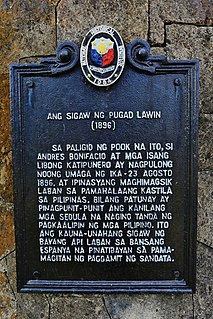 W
WThe Cry of Balintawak, was the beginning of the Philippine Revolution against the Spanish Empire.
 W
WEl filibusterismo, also known by its alternative English title The Reign of Greed, is the second novel written by Philippine national hero José Rizal. It is the sequel to Noli Me Tángere and, like the first book, was written in Spanish. It was first published in 1891 in Ghent.
 W
WThe Philippine Republic, more commonly known as the First Philippine Republic or the Malolos Republic, was a nascent revolutionary government in the Philippines. It was formally established with the proclamation of the Malolos Constitution on January 21, 1899, in Malolos, Bulacan, and endured until the capture of President Emilio Aguinaldo by the American forces on March 23, 1901, in Palanan, Isabela, which effectively dissolved the First Republic.
 W
WDuring the Philippine Revolution, various flags were used by the Katipunan secret society and its various factions, and later, after the Katipunan had been dissolved, the Philippine Army and its civil government.
 W
WThe Hong Kong Junta was an organization formed as a revolutionary government in exile by Filipino revolutionaries after the signing of the Pact of Biak-na-Bato on December 15, 1897. It was headed by Emilio Aguinaldo and included high-level figures in the Philippine revolution against Spanish rule who accompanied Aguinaldo into exile in the Crown Colony of Hong Kong from the Philippines.
 W
WThe Ilustrados constituted the Filipino educated class during the Spanish colonial period in the late 19th century. Elsewhere in New Spain, the term gente de razón carried a similar meaning.
 W
WThe Kataastaasan, Kagalanggalang Katipunan ng mga Anak ng Bayan, also known as Katipunan or KKK, was a Philippine revolutionary society founded by anti-Spanish colonialism Filipinos in Manila in 1892; its primary goal was to gain independence from Spain through a revolution.
 W
WLa Solidaridad was an organization created in Spain on December 13, 1888. Composed of Filipino liberals exiled in 1872 and students attending Europe's universities, the organization aimed to increase Spanish awareness of the needs of its colony, the Philippines, and to propagate a closer relationship between the Philippines and Spain.
 W
WThis is the list of the Weapons used in the Philippine revolution.
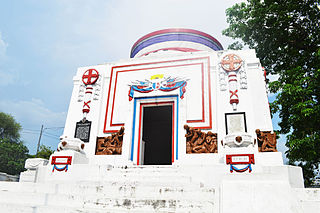 W
WThe Mausoluem of the Veterans of the Revolution is a memorial and national monument dedicated to Filipino revolutionaries of the Philippine Revolution of the 1890s and the Philippine-America War situated inside the Manila North Cemetery in Manila, Philippines.
 W
WMy Sad Republic is a 2000 Philippine English-language novel written by Filipino novelist Eric Gamalinda. The novel won for Gamalinda a Philippine Centennial Literary Prize in 1998. The 392-page novel was published by the Philippine Centennial Commission, the University of the Philippines Press, and the UP Creative Writing Center. My Sad Republic is the fourth novel written by Gamalinda. The theme of the novel is "love, obsession, and loss" occurring during the Philippine Revolution against the Spanish colonial regime of the Philippines, and during the Philippine–American War.
 W
WThe Naic Military Agreement was a document prepared on April 18, 1897 in which a number of participants in the Tejeros Convention repudiated the convention results. This repudiation, which followed on the 23 March Acta de Tejeros, would later cost Andres Bonifacio his life. Bonifacio would be tried for treason at Maragondon, Cavite on May 10, 1897 and sentenced to death.
 W
WThe Negros Revolution, commemorated and popularly known as the Fifth of November or Negros Day, was a political movement that in 1898 created a government on Negros Island in the Philippines, ending Spanish control of the island and paving the way for a republican government run by the Negrense natives. The newly established Negros Republic lasted for approximately three months. American forces landed on the island unopposed on February 2, 1899, ending the island's independence. Negros was then annexed to the Philippine Islands on 20 April 1901.
 W
WNoli Me Tángere, Latin for "Touch me not", is an 1887 novel by José Rizal during the colonization of the Philippines by Spain to describe perceived inequities of the Spanish Catholic friars and the ruling government.
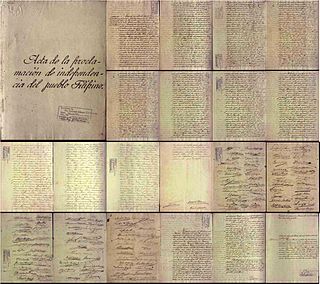 W
WThe Philippine Declaration of Independence was proclaimed on 12 June 1898 in Cavite II el Viejo, Philippines. With the public reading of the Act of the Proclamation of Independence of the Filipino People, Filipino revolutionary forces under General Emilio Aguinaldo proclaimed the sovereignty and independence of the Philippine Islands from the colonial rule of Spain.
 W
WDuring the Spanish colonial period in the Philippines, 1521–1898, there were several revolts against the Spanish colonial government by indigenous Moro, Lumad, Indians, Chinese (Sangleys), and Insulares, often with the goal of re-establishing the rights and powers that had traditionally belonged to Lumad Timueys, Maginoo Rajah, and Moro Datus. Some revolts stemmed from land problem and this was largely the cause of the insurrections that transpired in the agricultural provinces of Batangas, Bulacan, Cavite, and Laguna. Natives also rebelled over unjust taxation and forced labor.
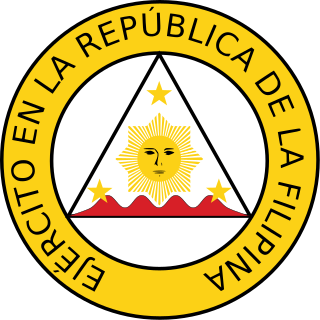 W
WThe Philippine Revolutionary Army later renamed Philippine Republican Army..
 W
WThe Revolutionary Government of the Philippines was an insurgent government established in the Spanish East Indies on June 23, 1898, during the Spanish–American War, by Emilio Aguinaldo, its initial and only President. The government succeeded a dictatorial government which had been established by Aguinaldo on June 18, and which was dissolve and replaced by this government upon its establishment. This government endured until January 23, 1899, when the proclamation of the Malolos Constitution established an insurgent Philippine Republic government which replaced it.
 W
WThe Propaganda Movement was a period of time when native Filipinos were calling for reforms, lasting approximately from 1880 to 1898 with the most activity between 1880 and 1895.
 W
WRayadillo was a blue-and-white striped cotton fabric used to make the military uniforms worn by Spanish colonial soldiers from the mid 19th century until the early 20th Century. Known by the British as "pyjamas", due to their resemblance with sleeping garments, it was commonly worn amongst soldiers posted in overseas Spanish tropical colonies and later, Spanish Morocco and Spanish Guinea. It became popular after being worn during the Spanish–American War, and was later adopted by the Philippine Army. It also served as the summer uniform of the regular army in Spain until 1914.
 W
WThe Republic of Negros was a short-lived revolutionary entity which had existed on the island of Negros first as a canton of the First Philippine Republic and later as a protectorate of the United States.
 W
WThe Republic of Zamboanga was a short-lived revolutionary government, founded by General Vicente Alvarez with his Zamboangueño Revolutionary Forces after the Spanish government in Zamboanga, Philippines officially surrendered and turned over Real Fuerza de Nuestra Señora La Virgen del Pilar de Zaragoza to Gen. Vicente Álvarez in May 1899. On 28 May 1899, Gen. Vicente Álvarez proclaimed independence and became the first and last genuinely elected president of the republic.
 W
WThe Tejeros Convention was the meeting held on March 22, 1897 between the Magdiwang and Magdalo factions of the Katipunan at San Francisco de Malabon, Cavite. These are the first presidential and vice presidential elections in Philippine history, although only the Katipuneros were able to take part, and not the general populace.
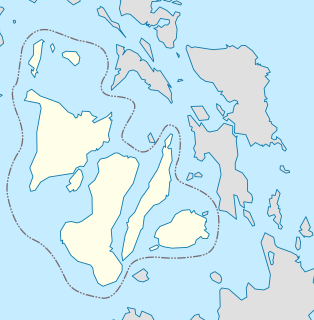 W
WThe Federal State of the Visayas was a revolutionary state in the Philippine archipelago during the revolutionary period. It was a proposed administrative unit of a Philippines under a federal form of government.